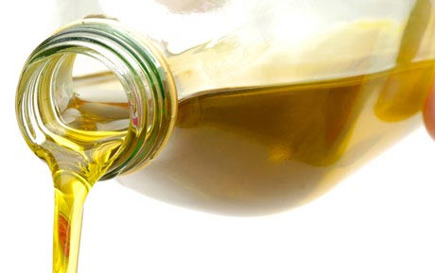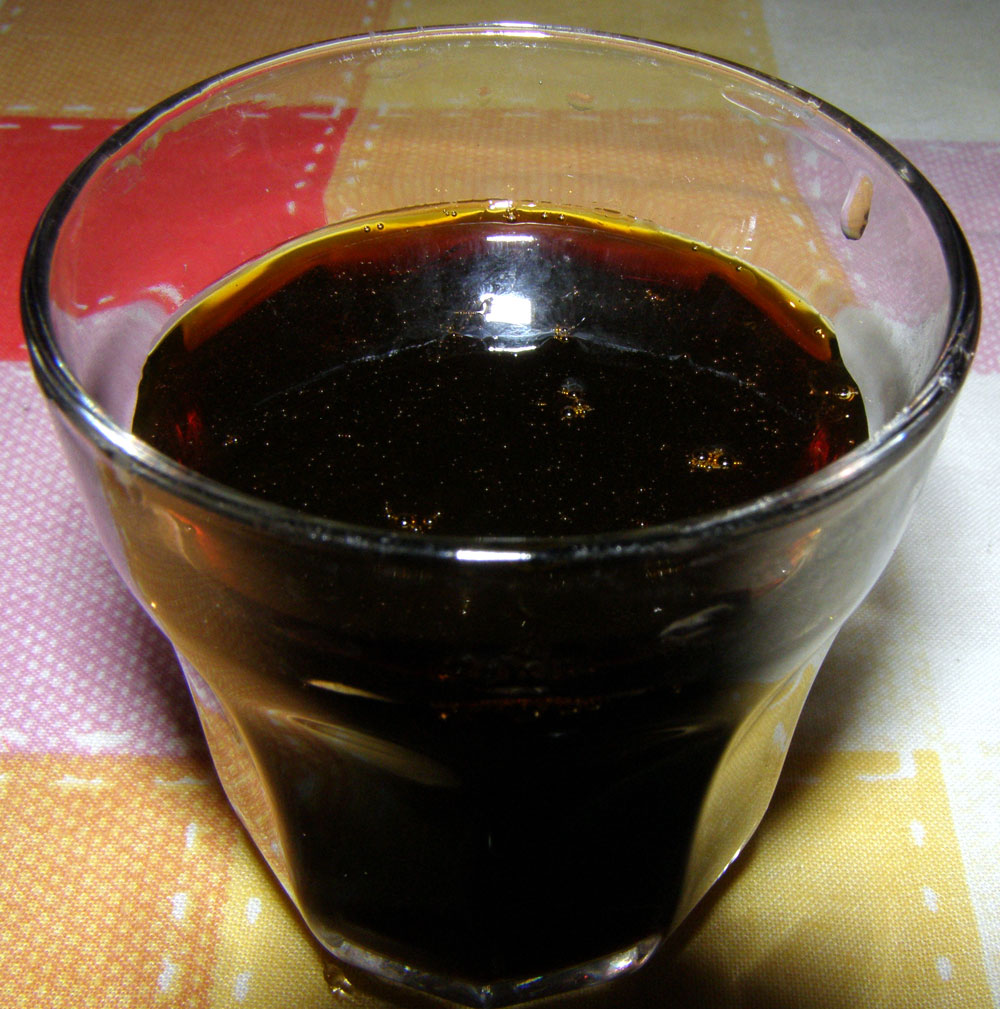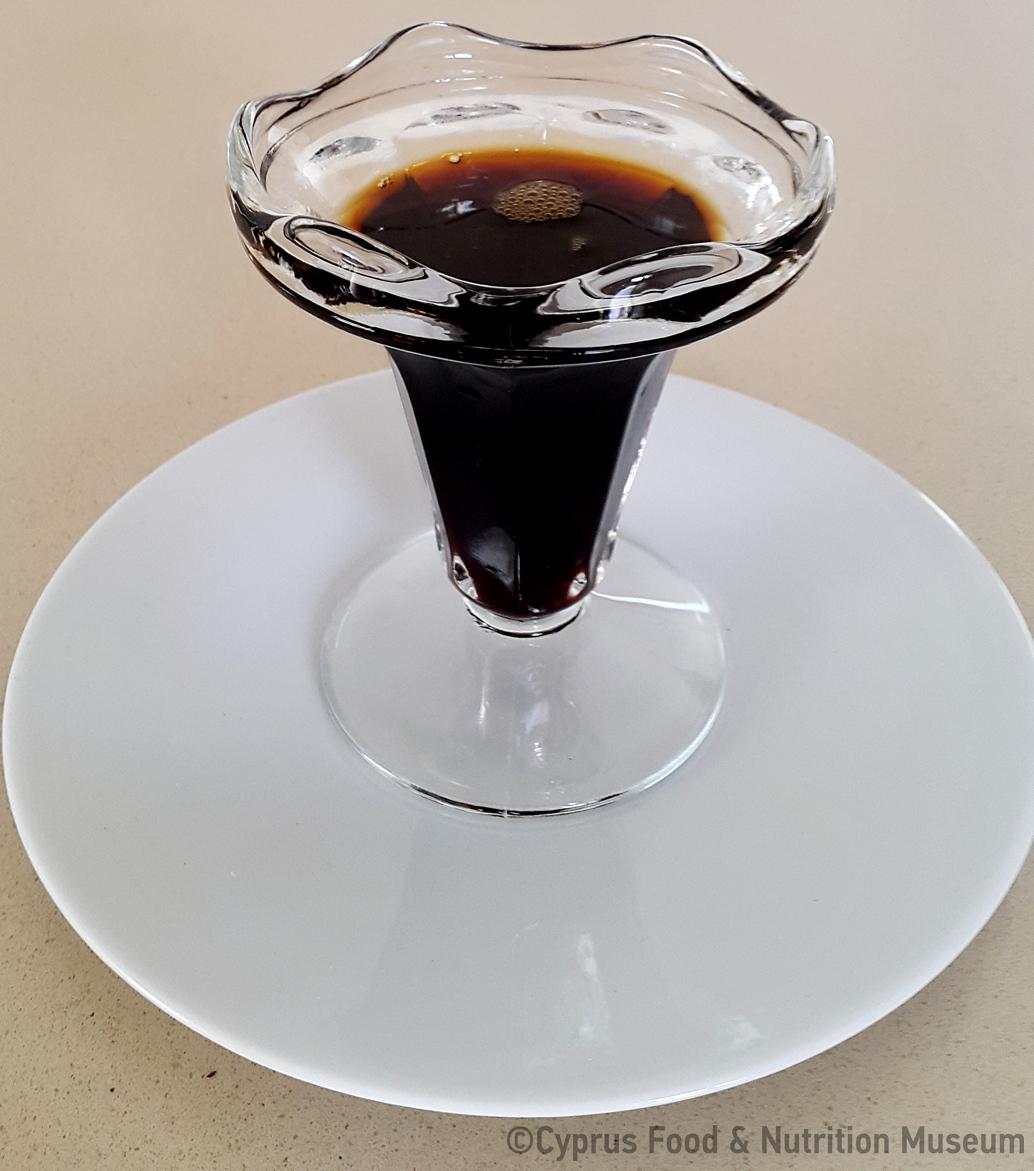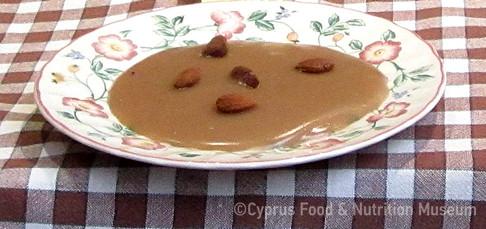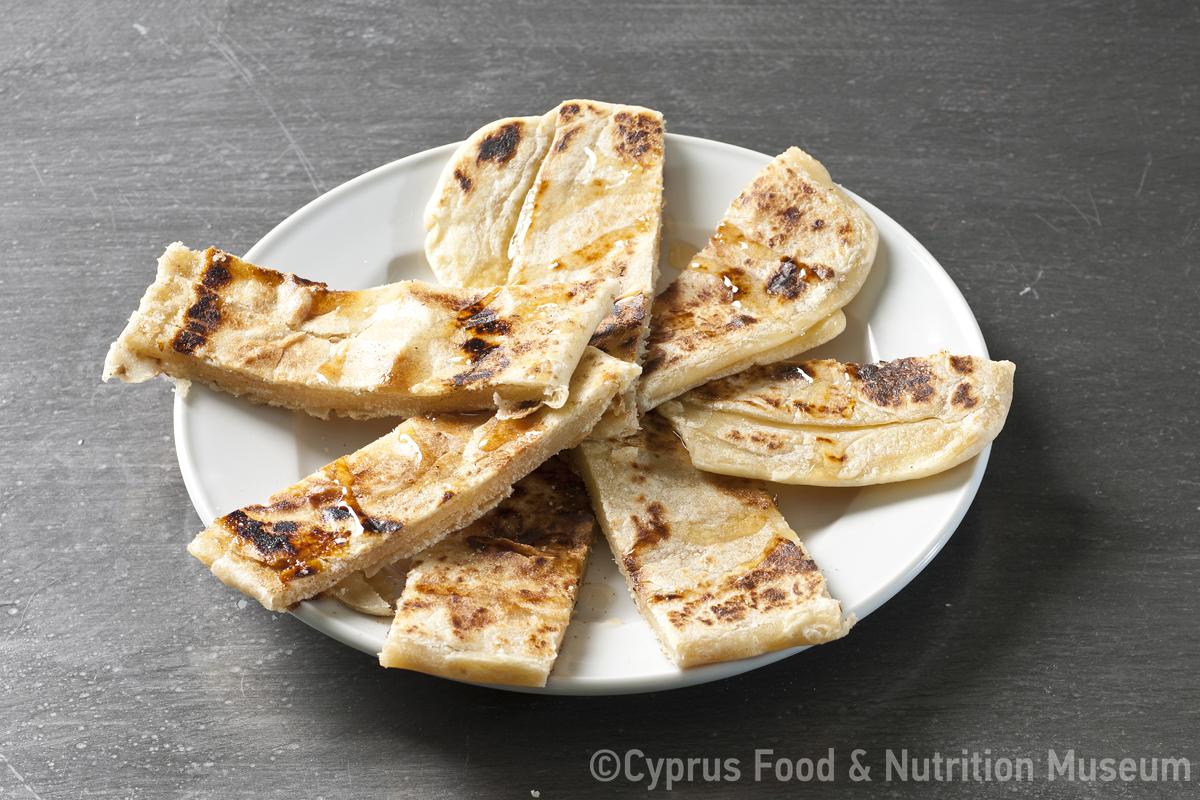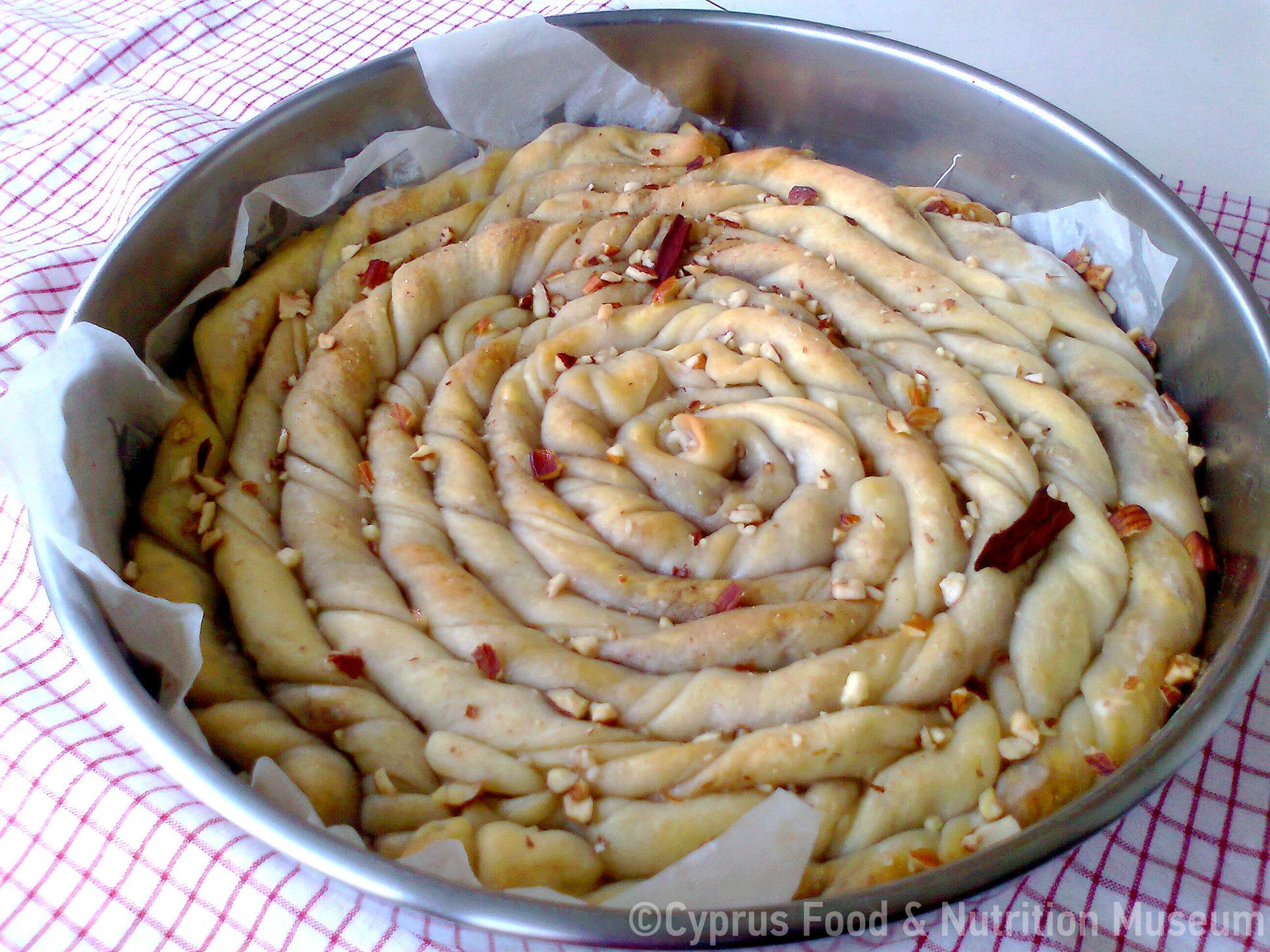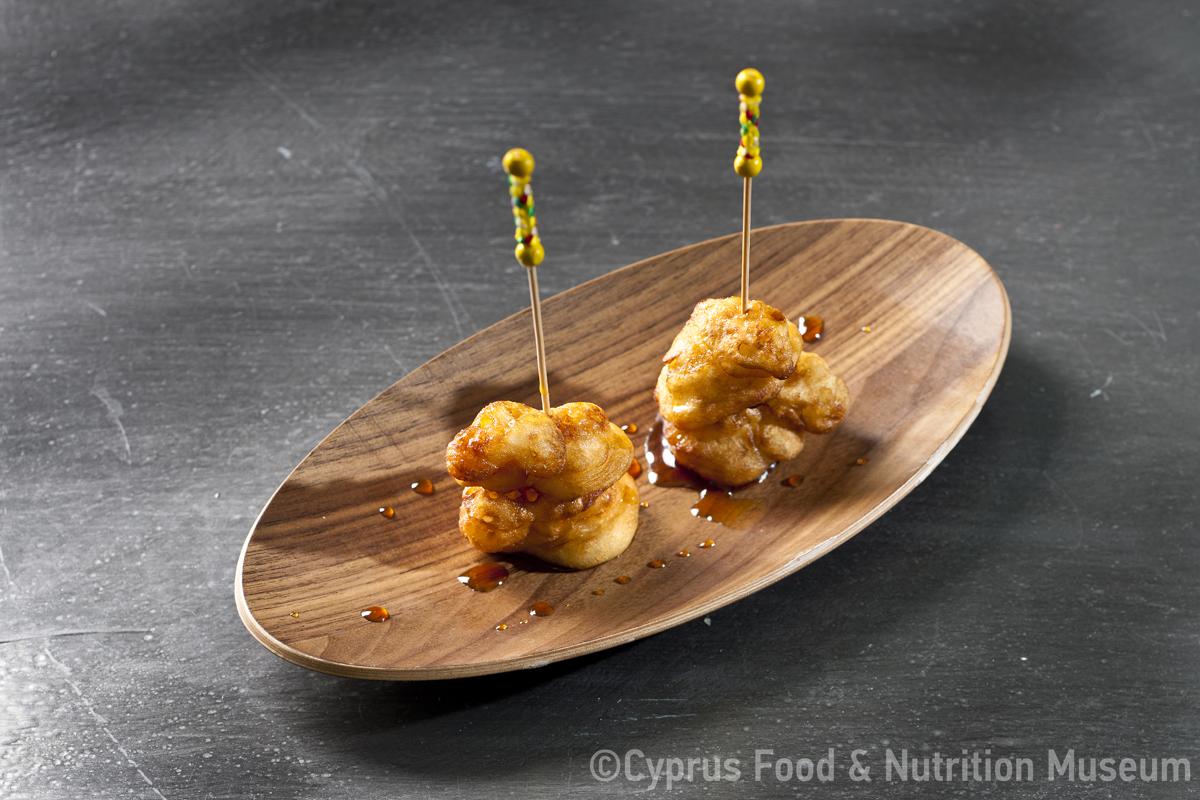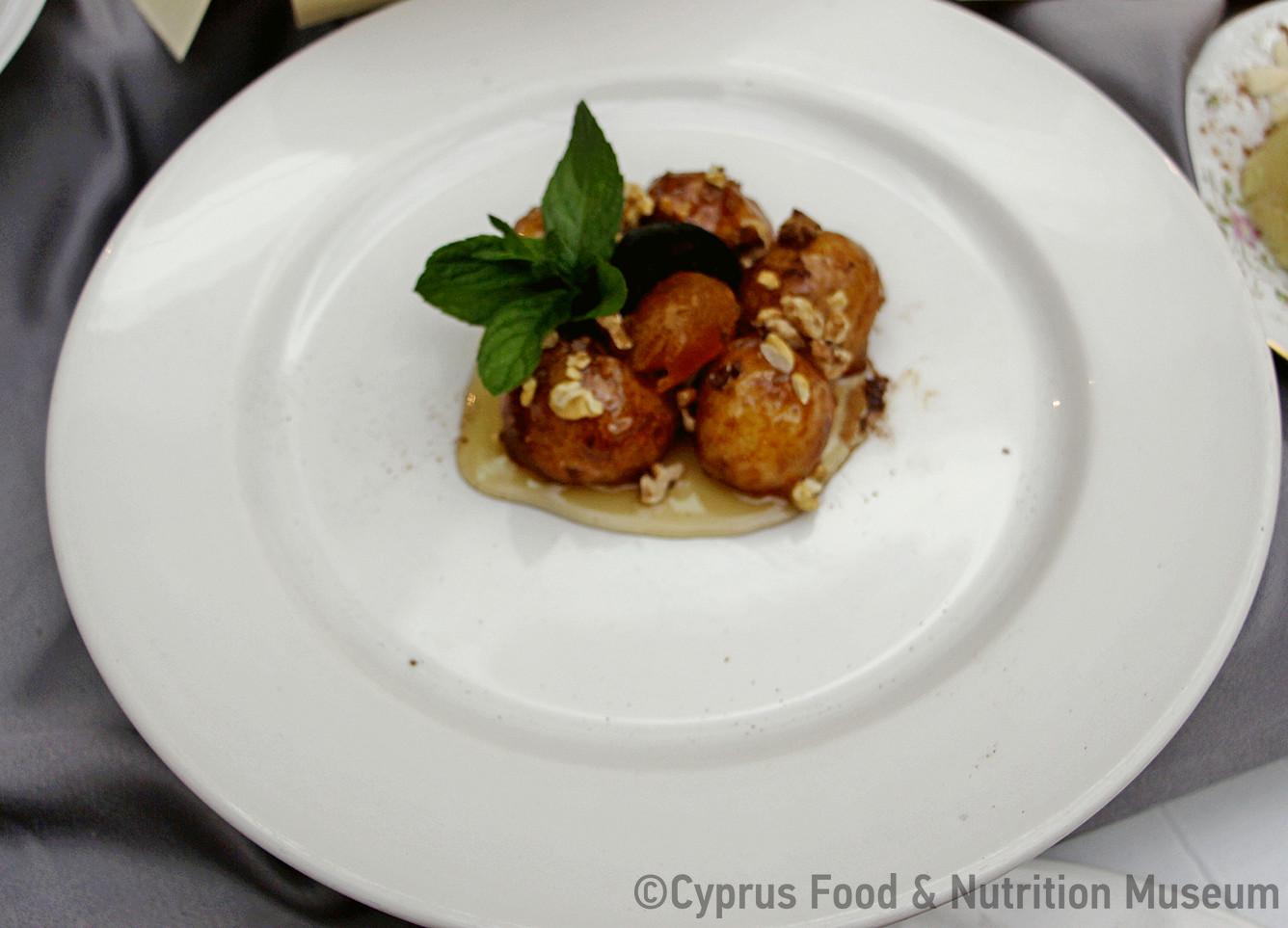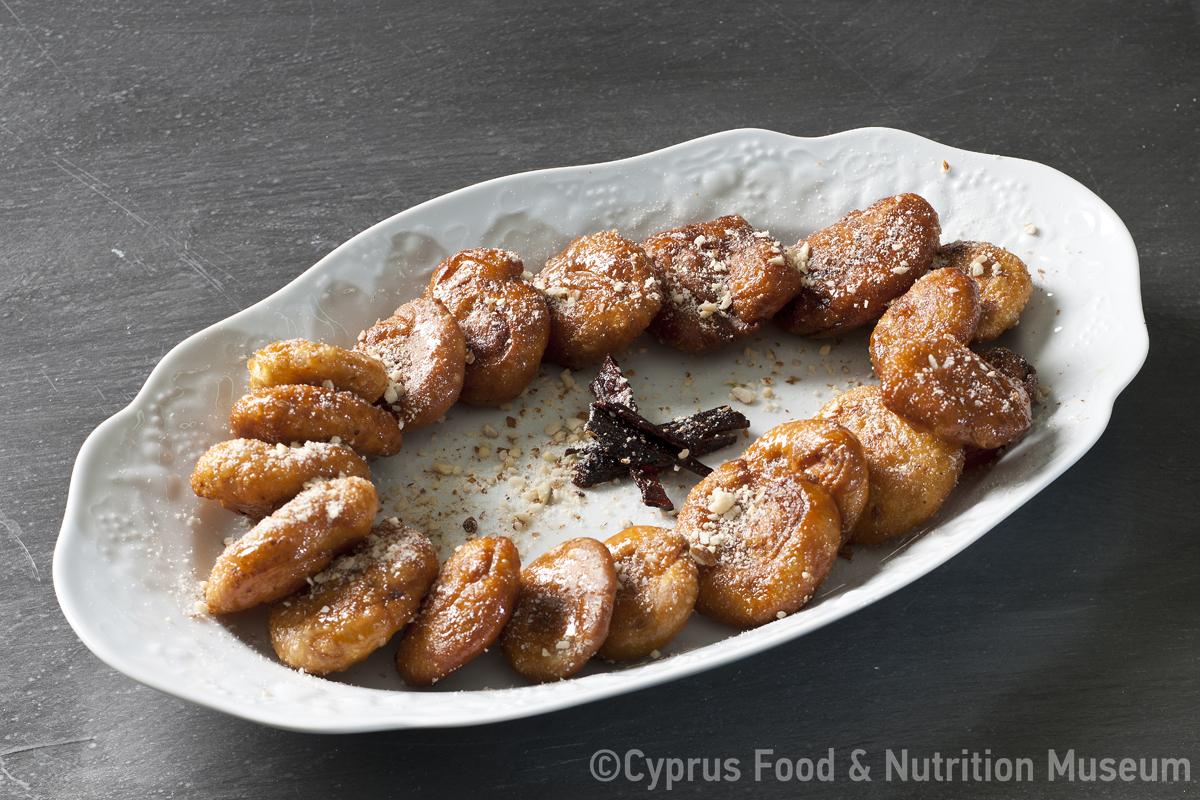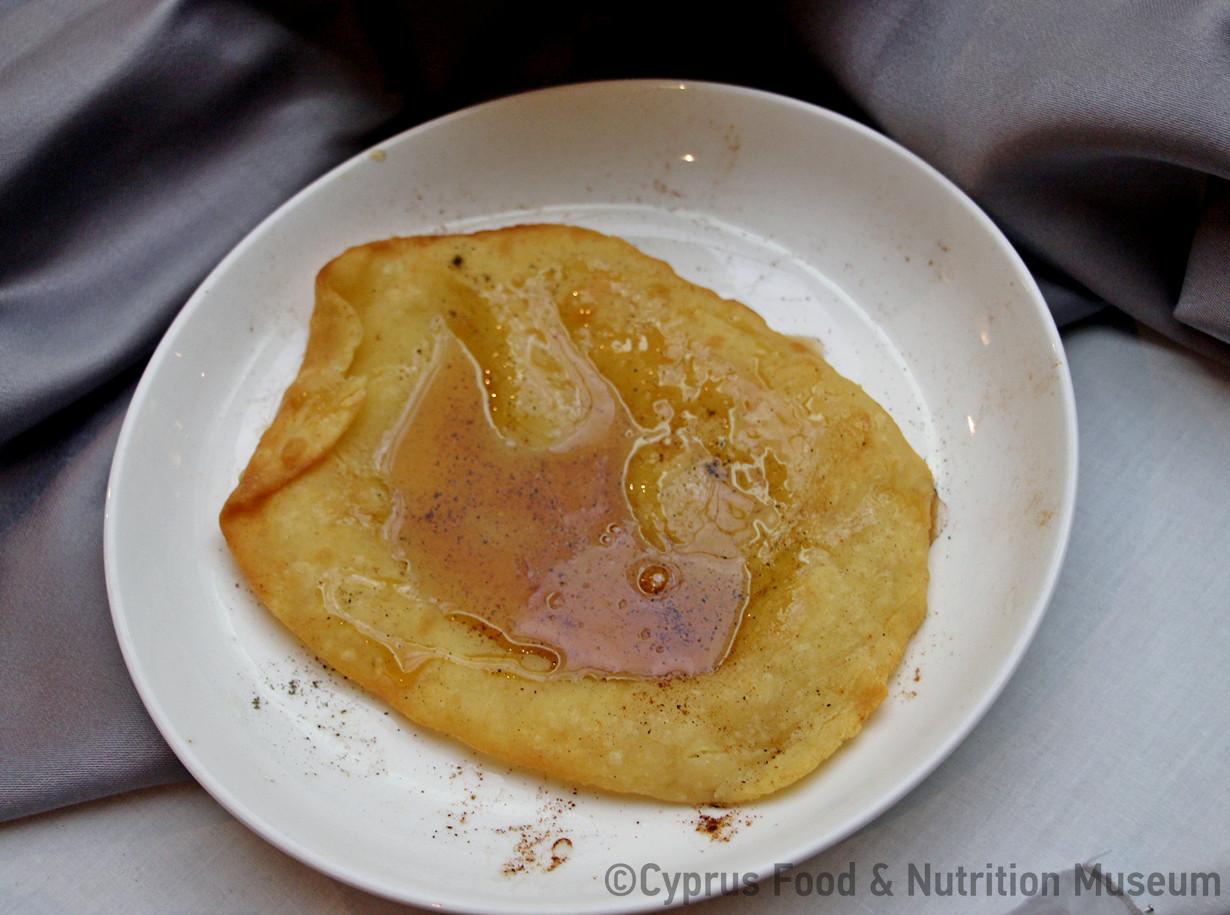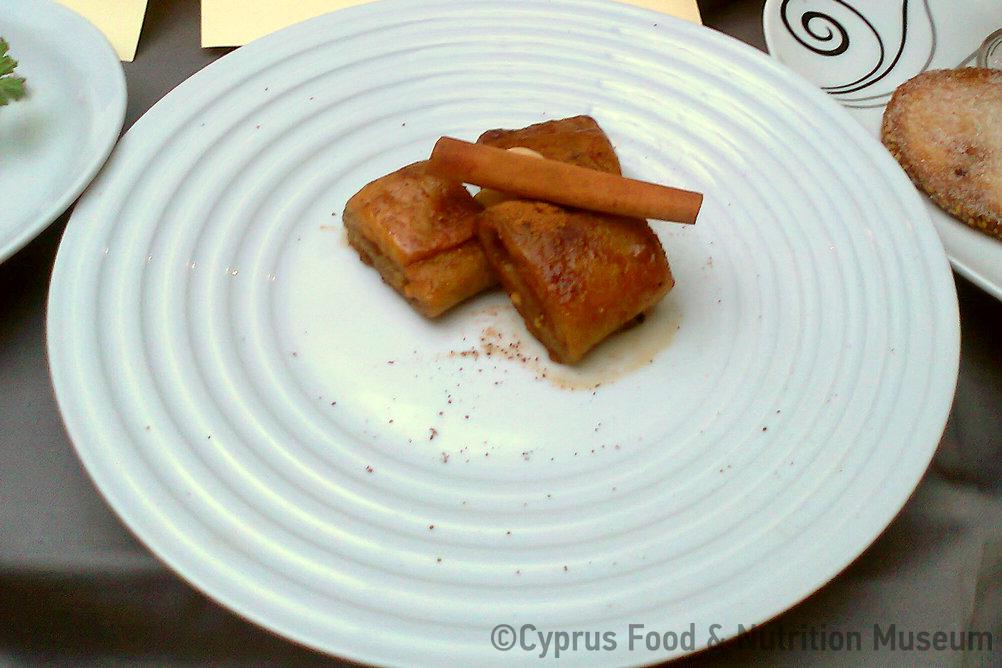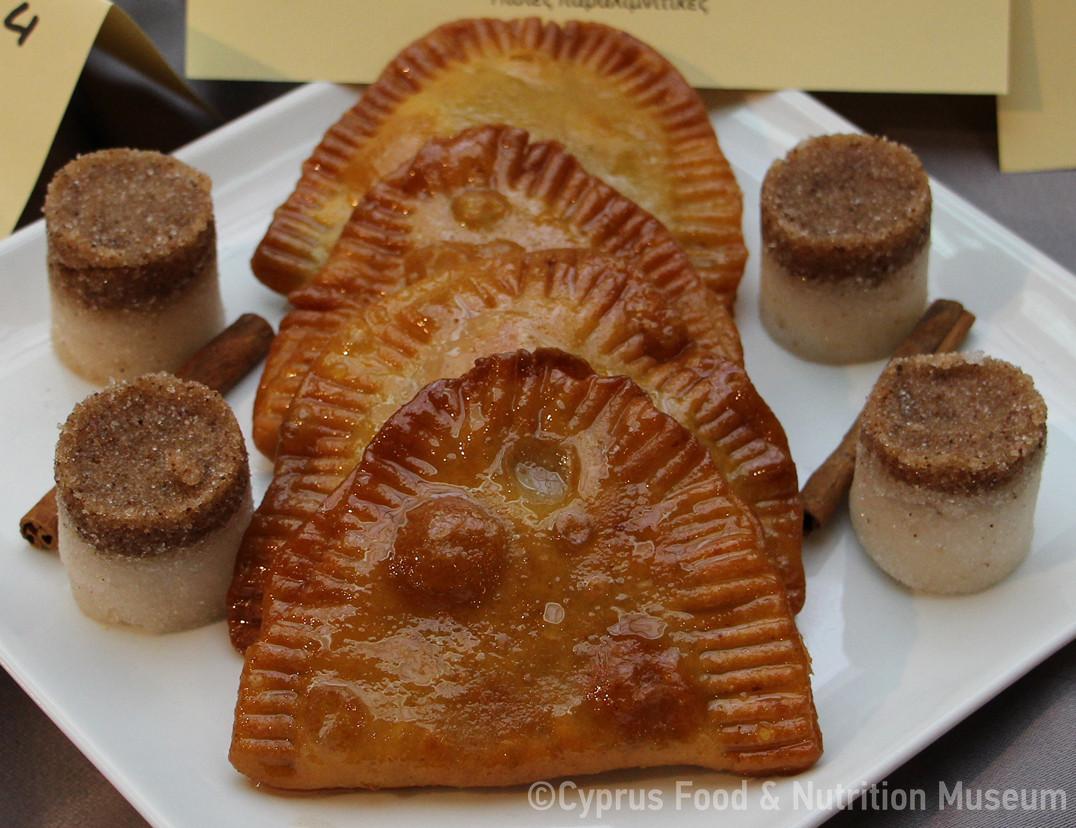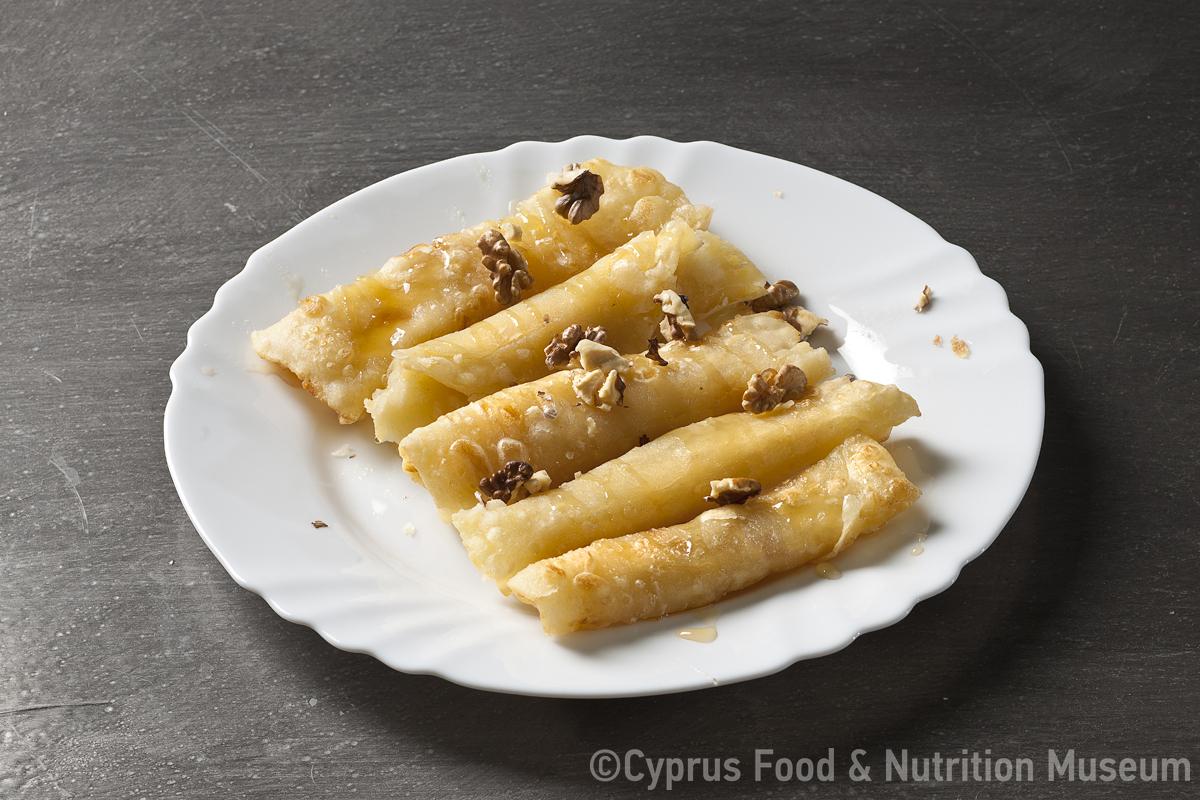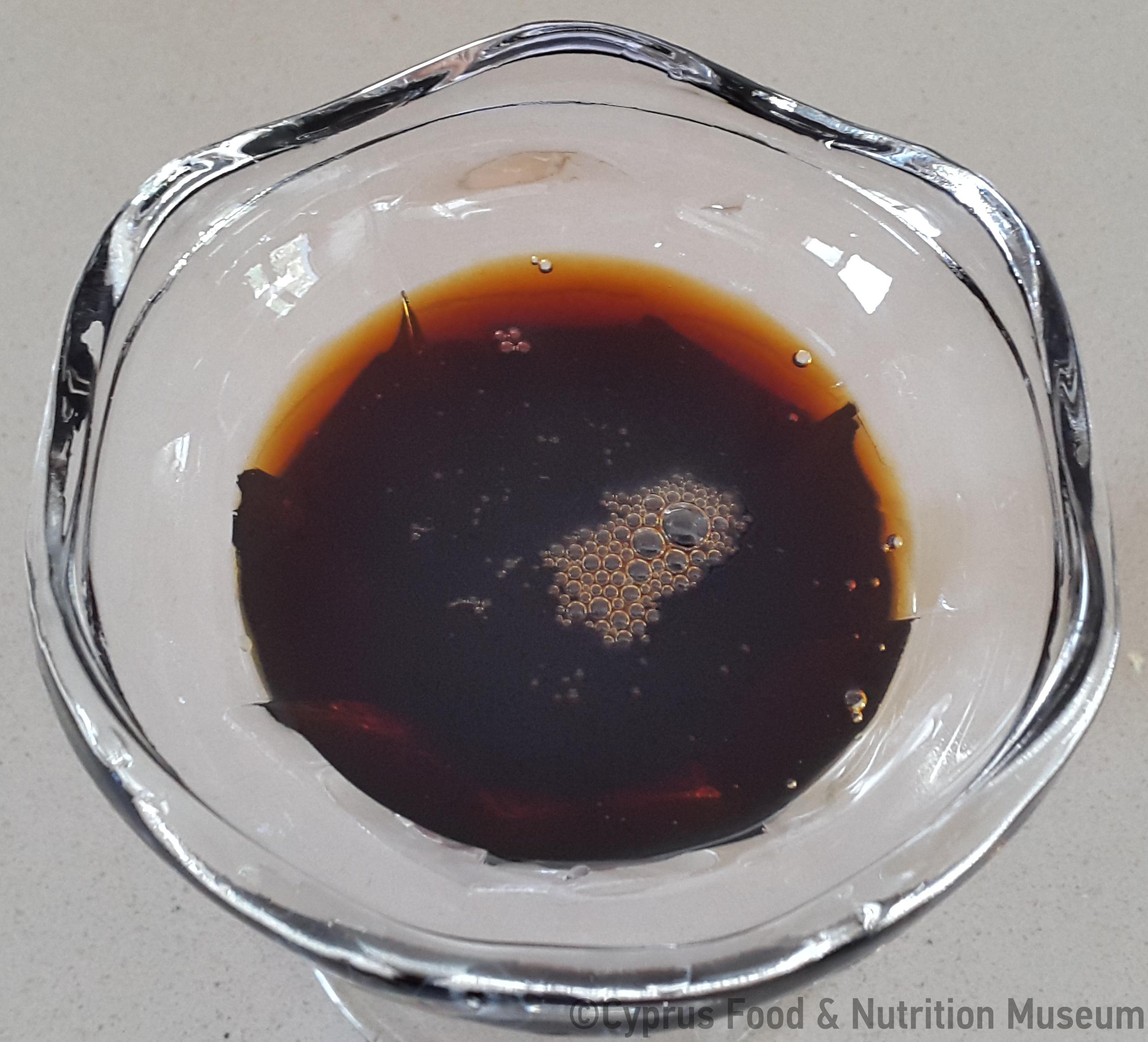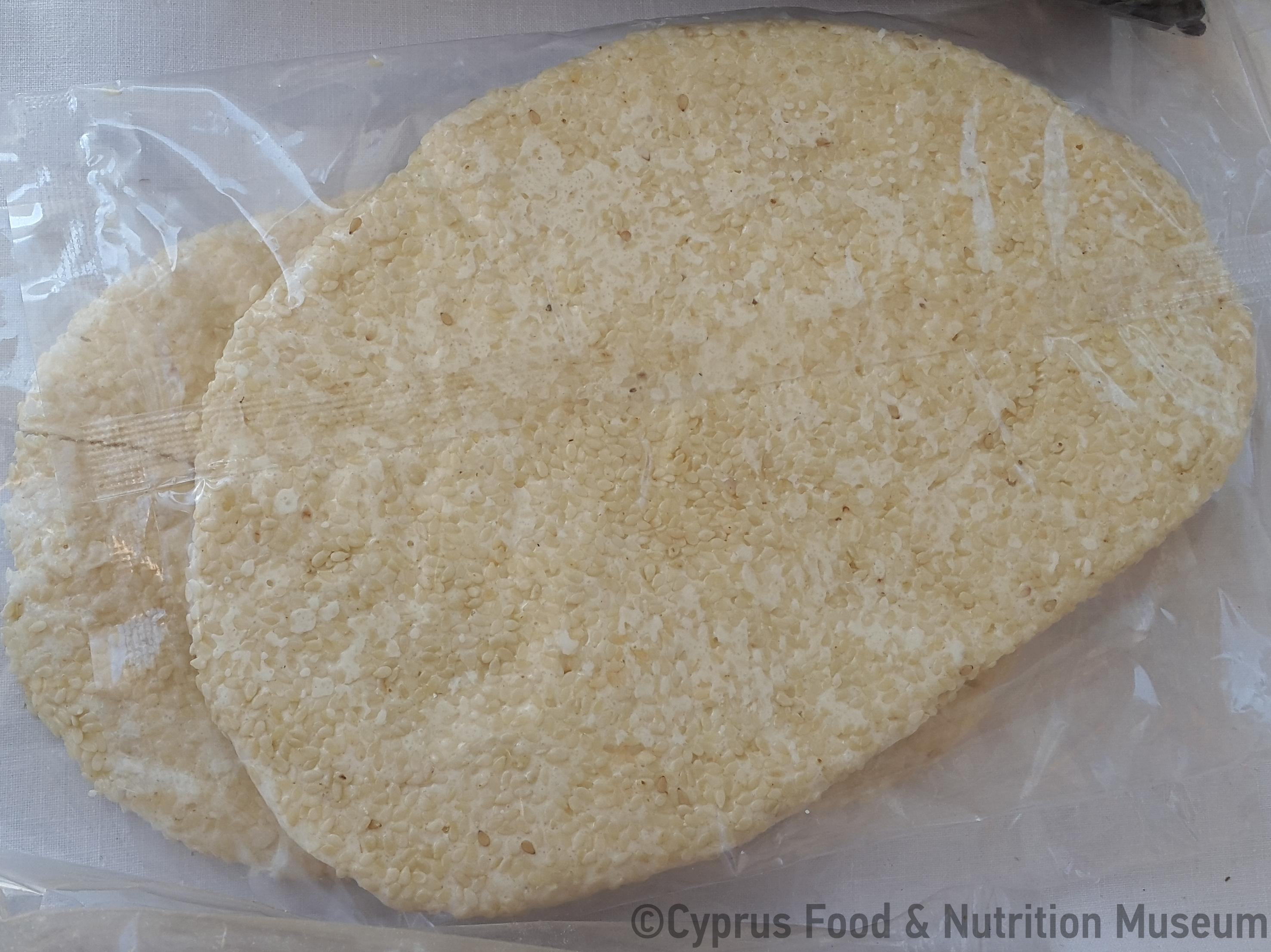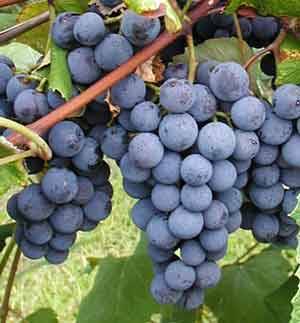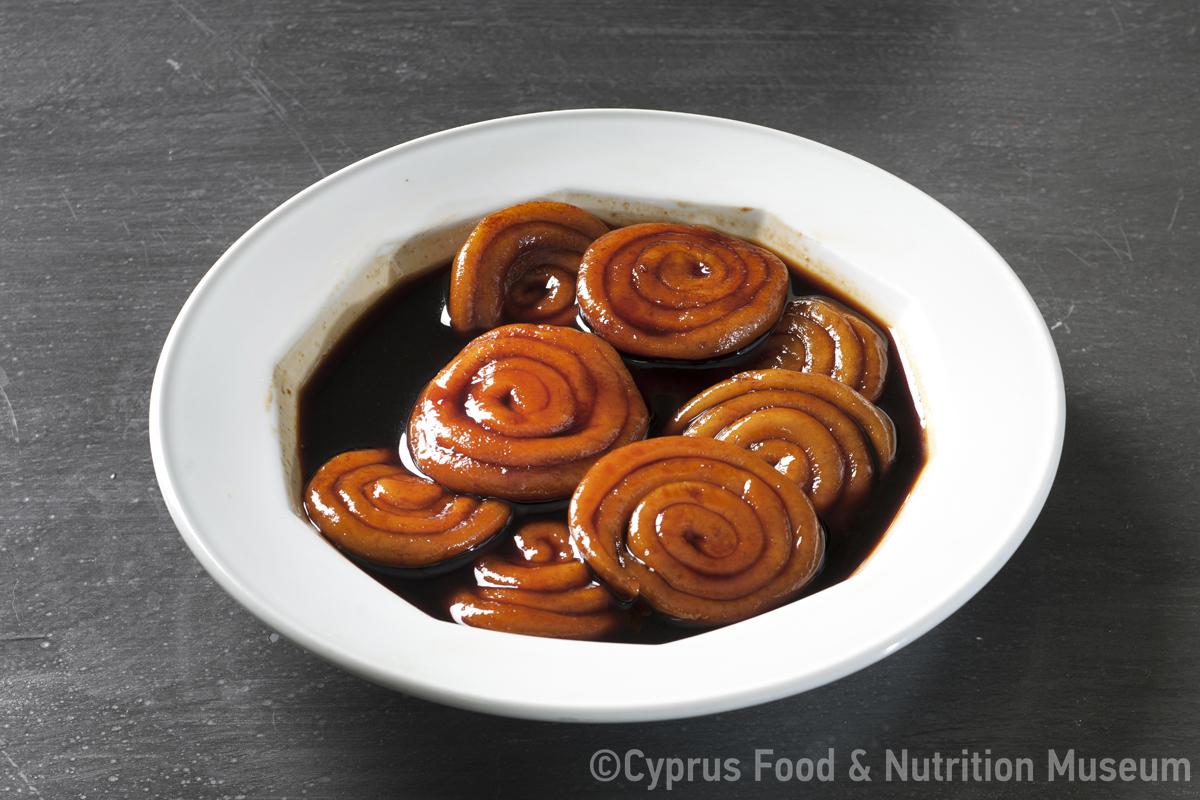Foods
In the villages of Paphos district and Rizokarpaso area, olive oil production was inadequate; housewives would, therefore, use olive oil just to flavour their salads and vegetables, while they would…
Traditional Recipes
Dark coloured thick syrup, ”honey" with a sweet and sour taste. Prepared from grape must by prolonged boiling, without prior fermentation, until it becomes dark and syrupy. Used as a sugar substitute…
Foods
Natural syrup from grape must.
Traditional Recipes
The tomato sauce is thin, the fresh beans remain tender and green, and fennel is added at the end without overshadowing the other flavours, despite its strong aroma. A recipe from Marathasa.
Traditional Recipes
Easy and quick pudding recipe, with fried onion and semolina. A sweet variation of grouta is usually made with espima or carob syrup.
Traditional Recipes
Easy and quick sweet porridge recipe with espima (grape syrup).
Traditional Recipes
In Dora village, Limassol this preparation was made during the feast of Apostle Andreas (Aristi Yiannakou, Dora Limassol).
Traditional Recipes
Local variation of a widespread traditional dish with meat and potatoes. The meat used is pork, or goat.
Traditional Recipes
Slices of bread fried in olive oil and drizzled with epsima (grape syrup).
Traditional Recipes
A pitta with cinnamon, sugar and honey, cooked on a metal non�stick surface with little or no oil.
Traditional Recipes
A syrupy dessert. The dough is brushed with oi, spread with a mixture of cinnamon, almonds and sugar and then rolledl, twisted and placed in the baking pan in a circle, to form the characteristic…
Traditional Recipes
A special variation of a well-known and beloved Cypriot pies with butternut squash. In Marathasa, kolokotes were usually savoury.
Traditional Recipes
In Marathasa region, the lalagouthkia, along with ladopittes, xerotiana and others were prepared at the beginning or end of agricultural tasks, such as the gathering of olives, the pruning of vines…
Traditional Recipes
Traditionally, lalagouthkia were made without filling and served sprinkled with sugar or drizzled with honey or epsima. In this newer version, anari filling is added to lalagouthkia.
Traditional Recipes
"We used to make laopittes when we had a surplus of pork fat and especially during Christmas when the whole family would gather." (Marina Kattou, Vouni Limassol)
Foods
Pishíes were a customary preparation of dough that were prepared on many occasions and served with sugar, honey or carob syrup.
Traditional Recipes
The pastry sheet is sprinkled with cinnamon and coarsely ground almonds and rolled into a long roll. Small pieces of the roll are then flattened to form the round pishíes.
Traditional Recipes
Pishíes was one of the main traditional sweets served on festive occasions. In the old days, they used to prepare pishíes mostly when they had pork fat available so they could fry them.
Traditional Recipes
The dough is covered with almonds and cinnamon, rolled out and cut into pieces. After frying, the pishíes are dipped in honey syrup.
Traditional Recipes
These pishíes are made with potato in the dough mixture. They are crescent-shaped and contain sugar and cinnamon.
Traditional Recipes
These pishíes are rolled out to the size of a plate, fried and sprinkled with sugar or honey. They are folded 2-3 times or rolled.
Traditional Recipes
In the old days, when there was a wedding, the bride's mother and maid of honour would make pishíes to treat the guests who would come to congratulate the couple.
Traditional Recipes
Epsima is made after continuous boiling of the must, i.e. the juice of grapes. Wheat is boiled in this syrup until the mixture thickens and a pulp is formed.
Traditional Recipes
Recipe from Marathasa. Fennel, which grows in abundance in the region and gives Marathasa its name, flavours many yahni (in tomato sauce) dishes such as potatoes, beans, broad beans and others.
Traditional Recipes
This recipe uses apples or quinces which are prepared using grape must as a sweetener and originates from Marathasa valley.
Traditional Recipes
The recipe comes from Marathasa. Sesamopites were one of the products sold by the people of Marathasa at festivals, along with porika, nuts, shoushoukko and pastellin.
Foods
Grapes were consumed as a fruit and were used to produce sweet wine, especially Commandaria, dry wine (mostly red), zivania and vinegar.
Foods
Originally, these products were the farmers' essential dry food during the working day. Later, they were consumed by all as a dessert or treat.
Traditional Recipes
Biscuits, shaped like hoops, boiled in water and dipped in epsima. “In the old days we used to prepare these biscuits when the grapes were ripe. We would collect the grapes from the vineyard and make…
Traditional Recipes
In the past, tsippopitta, a fragrant sweet pitta with milk skin, used to be prepared and consumed during the carnival period, the cheesefare week before Lent.
Traditional Recipes
“When they are golden brown, remove them with a slotted spoon and place them on a platter. Either sprinkle with sugar or drizzle some honey or epsima. (Sotiroula Kyriakou, Kyperounda)
